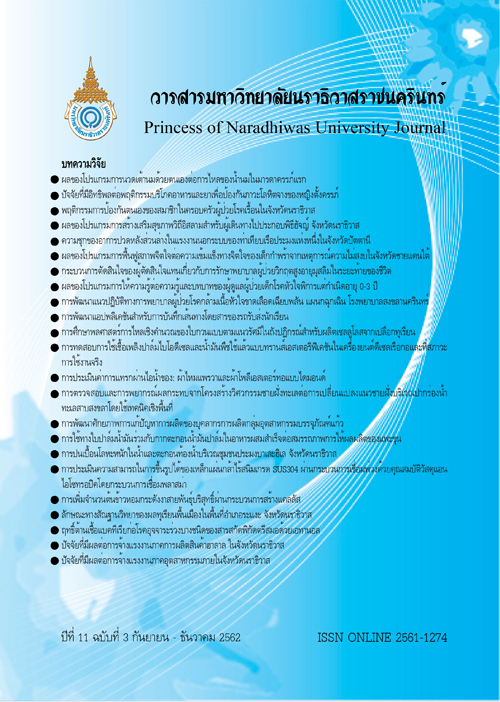Geospatial Monitoring and Forecasts of Coastal Engineering Structures’ Shoreline Transformational Impact at Songkhla Lake Mouth
Keywords:
Geo-Informatics, Coastal Engineering Structure, Shoreline Change, Songkhla Lake, DSAS ModelAbstract
This study aims to monitor and forecast the transformational impact of coastal engineering structures on the mouth’s shoreline of Songkhla Lake. Constructed in 1988, Songkhla Deep Sea Port is located at the lake mouth in the lower part of the Gulf of Thailand. While generated waves play a significant role in the northward longshore drift; the sediment’s movement is obstructed by the port and its 1,800-meter long embankment dam resulting in severe structural erosion to 1,660 meters of the north area. Throughout 48 years (1967-2015), 11 datasets of aerial photos, high-resolution satellite images, ArcView GIS 3.3’s visually estimated mapping, and GPS tracking were collected. Transformational analysis was computed using Digital Shoreline Analysis System (DSAS), linear regression rate, and end point rate—before and after the construction of the deep-sea port to determine the past evolution and predict the 10- and 20-year future changes of the shoreline.This study aims to monitor and forecast the transformational impact of coastal engineering structures on the mouth’s shoreline of Songkhla Lake. Constructed in 1988, Songkhla Deep Sea Port is located at the lake mouth in the lower part of the Gulf of Thailand. While generated waves play a significant role in the northward longshore drift; the sediment’s movement is obstructed by the port and its 1,800-meter long embankment dam resulting in severe structural erosion to 1,660 meters of the north area. Throughout 48 years (1967-2015), 11 datasets of aerial photos, high-resolution satellite images, ArcView GIS 3.3’s visually estimated mapping, and GPS tracking were collected. Transformational analysis was computed using Digital Shoreline Analysis System (DSAS), linear regression rate, and end point rate—before and after the construction of the deep-sea port to determine the past evolution and predict the 10- and 20-year future changes of the shoreline. The findings revealed that prior to the construction of Songkhla Deep Sea Port, the accretion of shoreline sediment at Chansawang Beach; Sai Kaew Beach; and Samila Beach was positive due to the absence of coastal engineering structures and sediment blocking. After the construction, the coasts of Chansawang and Sai Kaew erodes at a severe rate of over 5 meters per year, whereas the coast of Samila receives an accretion of shoreline sediment from structural blocking and wave redirection. The reason behind the northward sediment deficiency is a strong southward accretion at the sand-blocking dam near the lake mouth. In respective order, the 10- and 20-year forecasts indicated that the coastal erosion at Chansawang and Sai Kaew would worsen and claim 109 and 263 more meters into the land, whereas the sediment accretion at Samila would create outward coastal expansions for 157 and 170 more meters from the current shoreline. Since the coastal engineering structures obstruct the course of nature, it is imperative to resort to appropriate countermeasures, e.g., sand bypassing or beach nourishment. The expansion of the deep-sea port should remain confined within a suitable area, and Integrated Coastal Zone Management (ICZM) should be employed to sustain marine and coastal resources.




